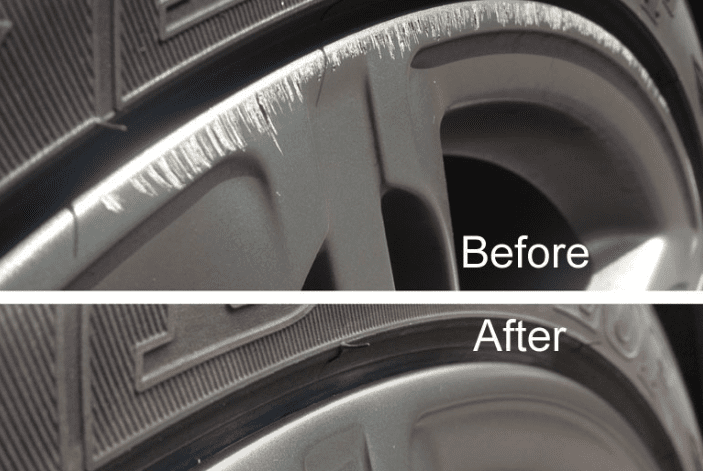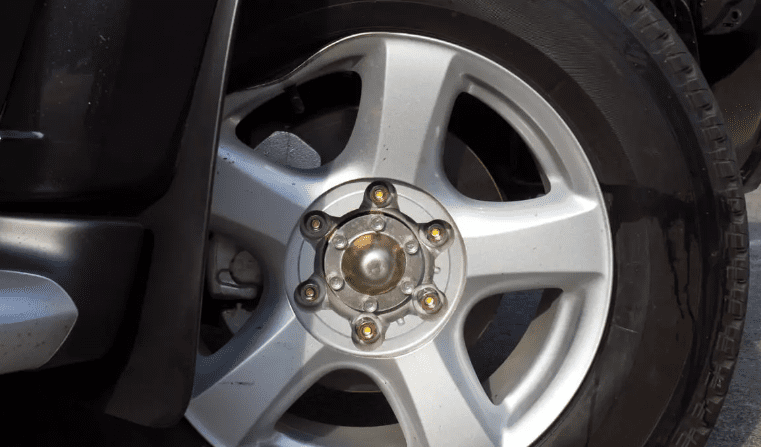Maintaining the pristine appearance of your vehicle’s wheels is crucial for both aesthetic appeal and overall functionality. Unfortunately, wheel dents can occur due to various factors, including curbside impacts, road debris, or accidental collisions. Understanding the intricacies of wheel dent repair is essential in preserving the integrity of your wheels and ensuring a smooth and safe driving experience. This comprehensive guide delves into the various techniques, costs, and maintenance tips associated with effective wheel dent repair.
Different types of wheel dents
Wheel dents can manifest in various forms, each requiring specific repair techniques tailored to the type and extent of the damage. Understanding the different types of wheel dents is crucial for accurately assessing the repair approach and ensuring effective restoration. Let’s explore the distinct categories of wheel dents:
- Surface Dents: These dents typically appear as minor indentations or superficial depressions on the wheel’s surface, often resulting from light impacts or contact with small road debris. Surface dents may not affect the structural integrity of the wheel and can often be addressed through paintless dent repair (PDR) methods, preserving the wheel’s original finish.
- Impact Dents: Impact dents are more pronounced and result from significant collisions, encountering potholes, or striking curbs at high speeds. These dents can cause visible deformities and compromise the wheel’s structural strength, potentially leading to wheel misalignment and reduced driving performance. Repairing impact dents often involves reshaping the affected area and reinforcing the wheel’s structural integrity through advanced repair techniques.
- Creased Dents: Creased dents manifest as sharp, angular deformations, usually caused by direct impacts or collisions that exert substantial force on the wheel. These dents can lead to severe structural damage, compromising the wheel’s stability and potentially affecting the tire’s seating and air pressure. Repairing creased dents involves meticulous reshaping, welding, and reinforcing the affected area to restore the wheel’s structural integrity.
- Paint Damage Dents: In addition to physical deformities, wheel dents may cause paint chipping, scratching, or cracking, affecting the wheel’s aesthetic appeal. Paint damage dents require comprehensive repair solutions that involve repainting the affected area, blending the paint to match the original color, and applying protective clear coats for a seamless and visually appealing finish.
- Corrosion-Related Dents: Over time, exposure to harsh environmental elements and road conditions can cause corrosion and rust to develop on the wheel’s surface. Corrosion-related dents often appear as pitted or eroded areas, compromising the wheel’s structural integrity and visual appeal. Repairing corrosion-related dents involves removing the corroded sections, treating the affected areas, and applying protective coatings to prevent future corrosion and preserve the wheel’s integrity.
dent repair in houston call us at (713)243-3535
Causes of wheel dents
Wheel dents can be caused by a variety of factors, including:
- Hitting potholes or other road hazards. This is one of the most common causes of wheel dents. When you hit a pothole or other road hazard, the impact can cause the wheel to bend or dent.
- Curbing your wheels. This is another common cause of wheel damage. Curbing your wheels can happen when you are parking, turning, or driving in narrow spaces.
- Driving over debris. Road debris, such as rocks, metal, and wood, can also cause wheel dents.
- Accidents. Wheel dents can also be caused by accidents, such as collisions with other vehicles or objects.
In some cases, wheel dents can also be caused by manufacturing defects. However, this is less common.
How to prevent wheel dents
There are a few things you can do to help prevent wheel dents, including:
- Be aware of your surroundings and avoid potholes and other road hazards.
- Be careful when parking and turning to avoid curbing your wheels.
- Drive slowly over rough roads and uneven surfaces.
- Avoid driving over debris.
- Have your wheels inspected regularly for signs of damage.
If you do get a wheel dent, it is important to have it repaired as soon as possible. Wheel dents can weaken the wheel and make it more susceptible to further damage. They can also lead to problems with the tires, such as air leaks and premature wear.

wheel dent repair in Houston TX
In Houston, TX, professional wheel dent repair services offer comprehensive solutions for addressing various types of wheel dents. Reputable auto body repair shop in Houston provides expert assessments and tailored repair techniques to restore the integrity and aesthetics of your vehicle’s wheels. From minor surface dents to more complex structural deformities, skilled technicians in Houston utilize advanced repair methods, including paintless dent repair (PDR) and conventional dent repair, to ensure high-quality and durable outcomes. By consulting professional wheel dent repair services in Houston, car owners can effectively preserve the optimal performance and visual appeal of their vehicle’s wheels.
Understanding the Complexity of Wheel Dent Repair
Assessing the Extent of Wheel Damage
When addressing wheel dents, it is imperative to assess the extent of the damage to determine the appropriate repair approach. Wheel dents can vary in severity, ranging from minor surface imperfections to more significant structural deformities. Conducting a thorough inspection to evaluate the depth and breadth of the dent is crucial in devising an effective repair strategy that ensures the integrity and stability of the wheel.
How to Choose the Best Auto Dent Removal Service for Your Vehicle
Exploring Wheel Dent Repair Techniques
Diverse Methods for Wheel Dent Restoration
A variety of wheel dent repair techniques are available, catering to different types and degrees of wheel damage. For minor surface dents, paintless dent repair (PDR) methods can be employed, involving the use of specialized tools to gently massage the dented area back into its original shape without compromising the wheel’s structural integrity. For more extensive dents that have affected the wheel’s structural integrity, conventional repair methods, such as welding, reshaping, and repainting, may be necessary to restore the wheel’s strength and functionality.
Cost of wheel dent repair
The cost of wheel dent repair can vary depending on a number of factors, including:
- Size and severity of the dent: Larger and more severe dents will typically cost more to repair.
- Type of wheel: Alloy wheels are typically more expensive to repair than steel wheels.
- Location of the dent: Dents on the inner or outer lip of the wheel may be more difficult and expensive to repair than dents on the face of the wheel.
- Repair method: DIY wheel dent repair kits are typically less expensive than professional wheel dent repair.
Here is a general overview of the cost of wheel dent repair:
- DIY wheel dent repair: $50-$100
- Professional wheel dent repair: $100-$500 or more
It is important to note that these are just general estimates. The actual cost of wheel dent repair may vary depending on the factors listed above.
The Process of Paintless Dent Removal Houston: A Step-by-Step Guide
Consulting Professional Wheel Repair Services
Ensuring Quality and Reliability
When addressing wheel dents, consulting professional wheel repair services is crucial to ensure high-quality and reliable repair outcomes. Reputable wheel repair shops and technicians can provide accurate assessments, detailed cost estimates, and tailored repair solutions based on the specific damage to your vehicle’s wheels. Prioritizing experienced and skilled technicians who utilize advanced repair techniques and adhere to industry standards can guarantee a durable and visually appealing repair outcome.
Factoring in Wheel Material and Structural Integrity
Tailoring Repair Methods to Wheel Composition
The material composition of the wheel, whether aluminum alloy, steel, or composite, significantly influences the repair approach and overall repair costs. Each type of wheel material requires specific repair techniques and materials to maintain its structural integrity and visual appeal. Understanding the nuances of different wheel materials and consulting experts proficient in handling various wheel compositions is essential for ensuring effective and long-lasting repair solutions.

DIY wheel dent repair
DIY wheel dent repair can be a viable option for addressing minor dents and preserving the aesthetics of your vehicle’s wheels. For surface-level dents, utilize DIY repair kits equipped with specialized tools and instructions for gently manipulating the dented area back into shape.
Additionally, consider employing heat and suction techniques using household items, such as a hairdryer and plunger, to gradually restore the wheel’s surface.
Exercise caution and avoid aggressive repair attempts, as improper techniques can potentially exacerbate the damage. For complex or extensive dents, consulting professional wheel repair services is advisable to ensure a safe and effective repair outcome.
Paintless Dent Repair Cypress TX: Restoring Your Vehicle’s Glory with Precision
Insurance and wheel dent repair
Insurance coverage for wheel dent repair can vary based on the specific terms and conditions outlined in your auto insurance policy. Comprehensive insurance policies often cover wheel repairs resulting from non-collision events, such as road debris, vandalism, or weather-related damage.
Assess your policy’s coverage limits, deductibles, and exclusions to understand the extent of the insurance benefits for wheel dent repairs. Consulting with your insurance provider and providing detailed documentation of the incident can facilitate the claims process and help mitigate out-of-pocket expenses.
Reviewing the policy regularly and understanding the available coverage options can provide valuable insights into the financial implications of wheel dent repair.
Car Door Dent Repair Cost: Factors, Considerations, and Options
Conclusion
In summary, understanding the complexities of wheel dent repair encompasses exploring various repair techniques, assessing repair costs, consulting professional services, prioritizing preventive maintenance, and understanding insurance coverage. By implementing these comprehensive approaches, car owners can effectively address wheel dents, preserve the integrity and aesthetics of their vehicle’s wheels, and ensure a safe and smooth driving experience. Prioritizing quality, reliability, and proactive maintenance measures can significantly contribute to the longevity and optimal performance of your vehicle’s wheels.





